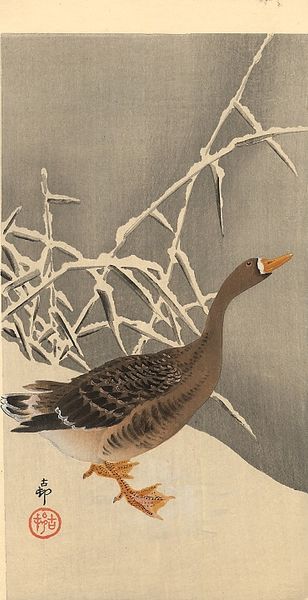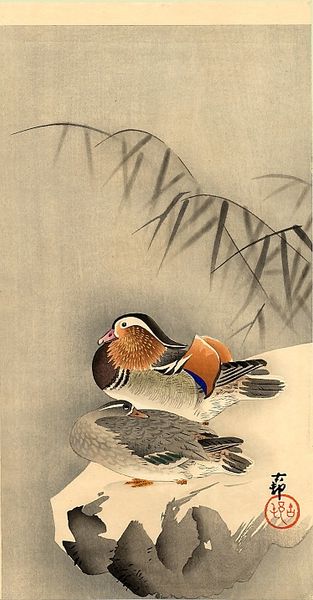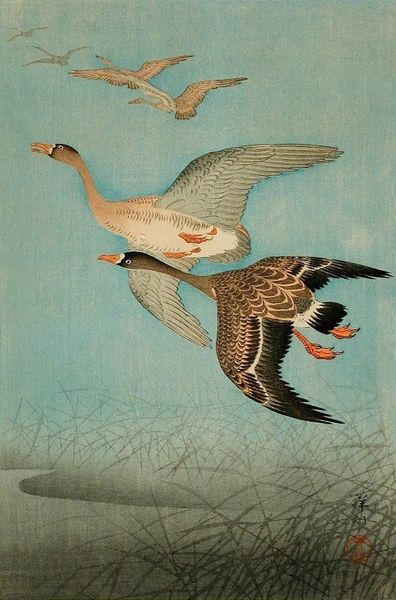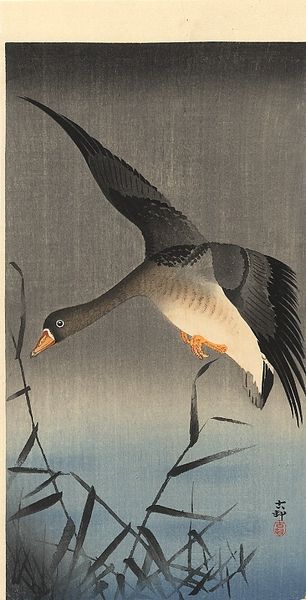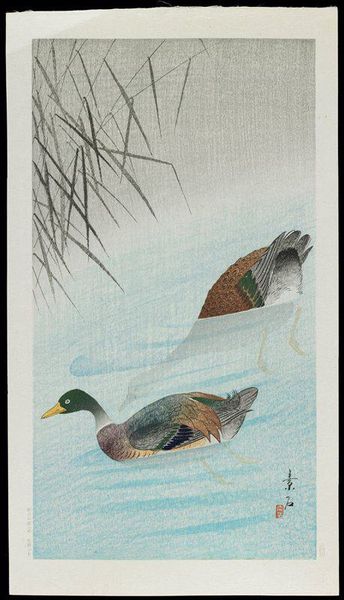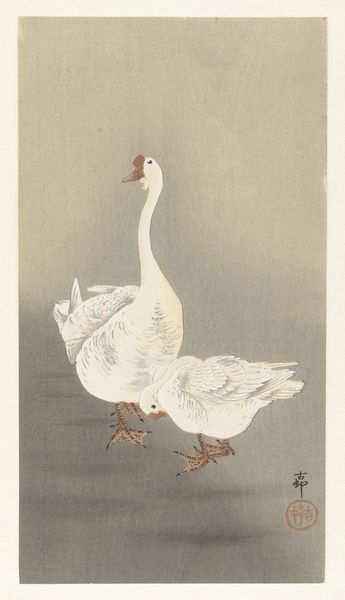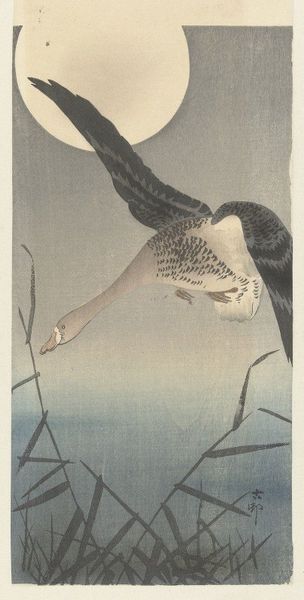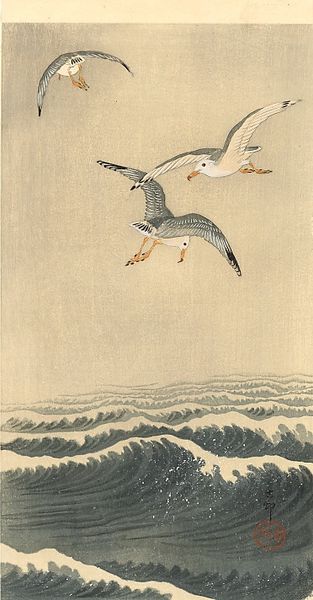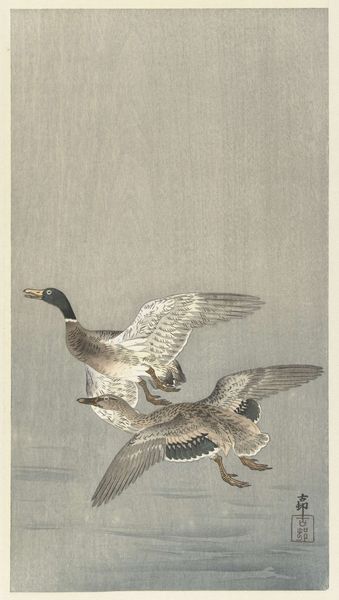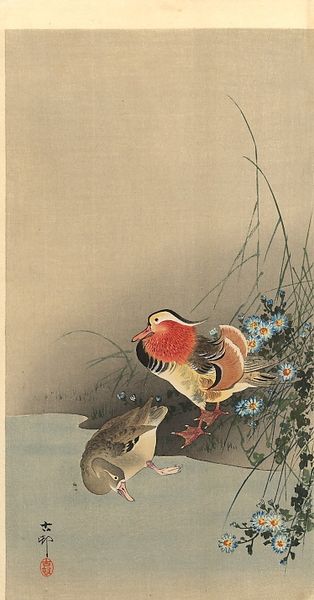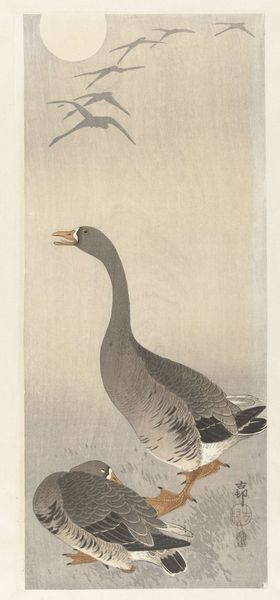
painting, woodblock-print
#
painting
#
asian-art
#
landscape
#
bird
#
ukiyo-e
#
figuration
#
woodblock-print
#
line
#
realism
Copyright: Public domain
Curator: Let's take a look at "Mallards in Snow," a woodblock print by Ohara Koson. What strikes you first? Editor: The stillness, almost a hushed silence. The cool palette really captures that quiet feeling of a snowy day. The textures are so subtle, I can almost feel the cold air. Curator: Absolutely. Koson was a key figure in the Shin-Hanga movement, which aimed to revitalize traditional Ukiyo-e prints. What makes this distinct is its realism combined with that distinctly Japanese sense of design and composition. He captured a specific sense of beauty within natural scenes. Editor: And I think it goes beyond just beauty. Consider the lives of these ducks weathering the winter. Are they a symbol of resilience in the face of hardship? Is there something in this image that could represent our struggles? And if these questions seem basic, remember the Ukiyo-e tradition was aimed at a broad audience. The genre gained popularity in the Tokugawa era in a rapidly urbanizing Japan; images like this may have acted as surrogates to the increasingly disappearing rural settings. Curator: I think you're right. It highlights how traditional motifs were being reinterpreted within modern, changing societal values. What was once common now takes on new value in artistic imagery, something seen with other Ukiyo-e artists working in urban areas in the same period. Editor: The framing too is interesting. We're very close to the ducks, we can admire their feathers, almost invading their space. The towering snow covered plant isolates them while also calling our attention to them, to their resilience, and to the winter weather. Curator: And that masterful use of line really shows off Koson’s technique and the level of skill involved in woodblock printing. I’m continually impressed by the ways in which he manages to use depth through subtle variations in color and tone, rather than strict Western perspectives, something particularly innovative for prints of this nature in his period. Editor: It certainly does spark a dialogue about the tensions of nature and survival, especially relevant as we consider our own impact on natural spaces today. Curator: It invites us to reconsider how these images were important in shaping visual cultures. Editor: A quiet call for empathy and appreciation of our world and other living things.
Comments
No comments
Be the first to comment and join the conversation on the ultimate creative platform.
